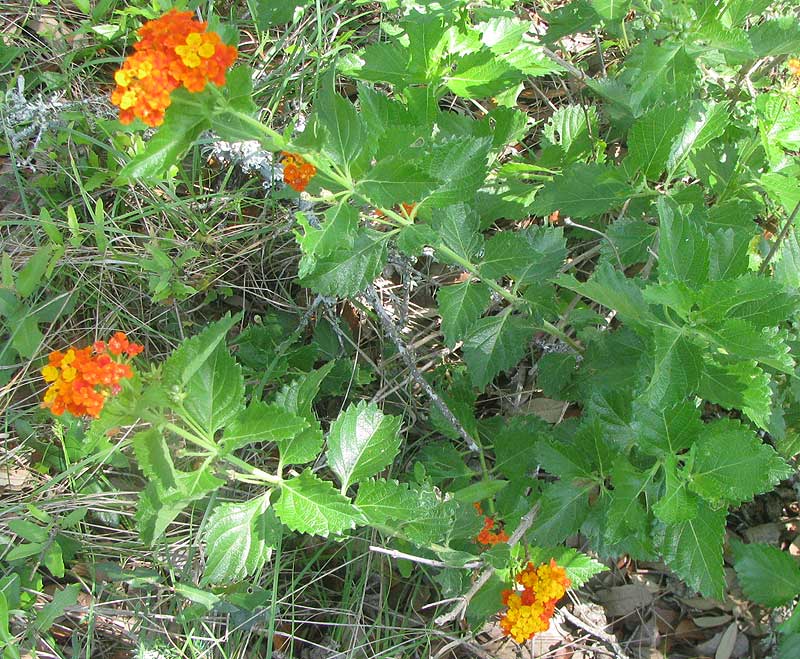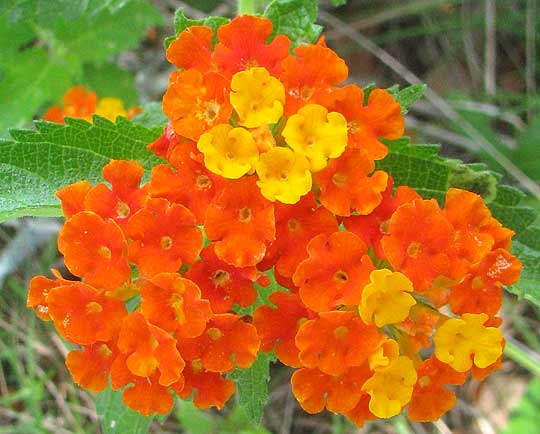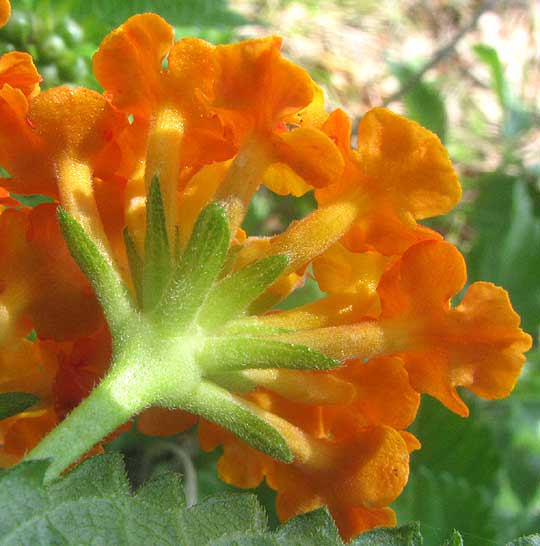Excerpts from Jim Conrad's
Naturalist Newsletter

from the June 23, 2013 Newsletter issued from the Frio Canyon Nature Education Center in the valley of the Dry Frio River in northern Uvalde County, southwestern Texas, on the southern border of the Edwards Plateau; elevation ~1750m (~5750 ft); N29.62°, W99.86°; USA
LANTANAS FLOWERING
Above you see part of a sprawling, knee-high, woody-based shrub often planted in people's yards in this area, plus I find it in woods on our hills' lower slopes growing in the wild. You probably recognize it as a lantana. It's LANTANA URTICOIDES, commonly called Texas Lantana, Calico Bush, Trailing Lantana, West Indian Shrub-verbena, Bunchberry, Hierba del Cristo, and other names.
A pretty shot from above a flower cluster showing how orange flowers can reside inside an otherwise red cluster of flowers, and that the individual flowers are slightly asymmetric, is shown below:

A view of a flowering head from below shows that the corollas' tubes also are slightly curved, adding to the blossoms' asymmetry, as seen below:

Most sources agree that Texas Lantana, a member of the Verbena Family, is native to Texas, but it's hard to find anyone stating its original native distribution. One reason that figuring that out might be hard is that, because of the shrub's beauty, it's widely planted and often escaped. Also, another species, Lantana camara, is quite similar, is planted even more widely, and apparently much more aggressively escapes into the wild worldwide. Plus, the two species hybridize, the flowers of both appear to change color as they age, and possibly the color ranges overlap.
In Shinners & Mahler's Flora of North Central Texas I read that our Texas Lantanas' leaves are normally ovate (egg-shaped) to round with margins bearing a few teeth 2-5mm high, while Lantana camera leaves may have their bases forming broad lobes that extend backwards (cordate leaves) or are triangular in shape, and have leaf margins with teeth that are only 0.5-1.5mm high. Our plant's margins bear teeth 2-5mm high, as is proper for Texas Lantanas.